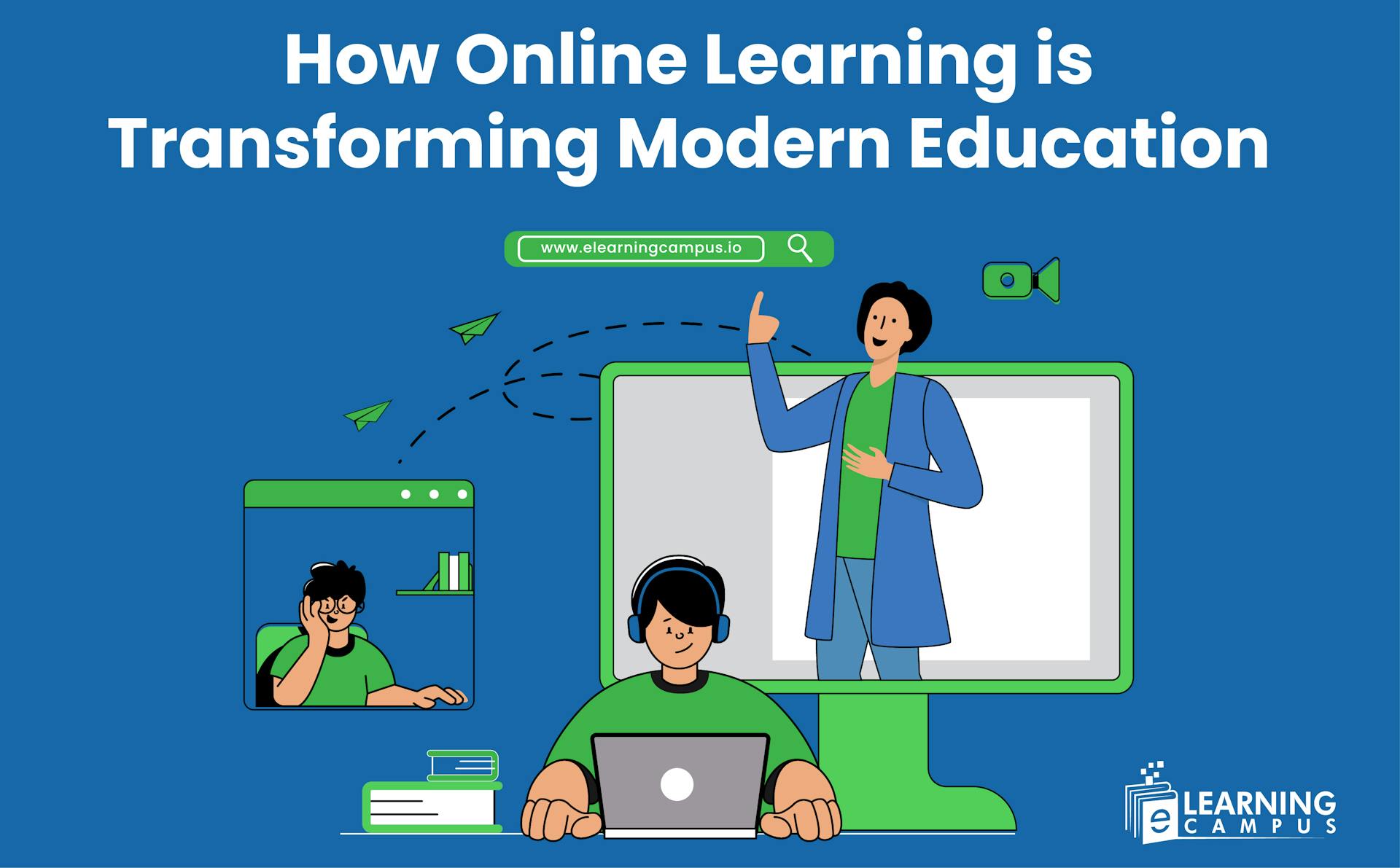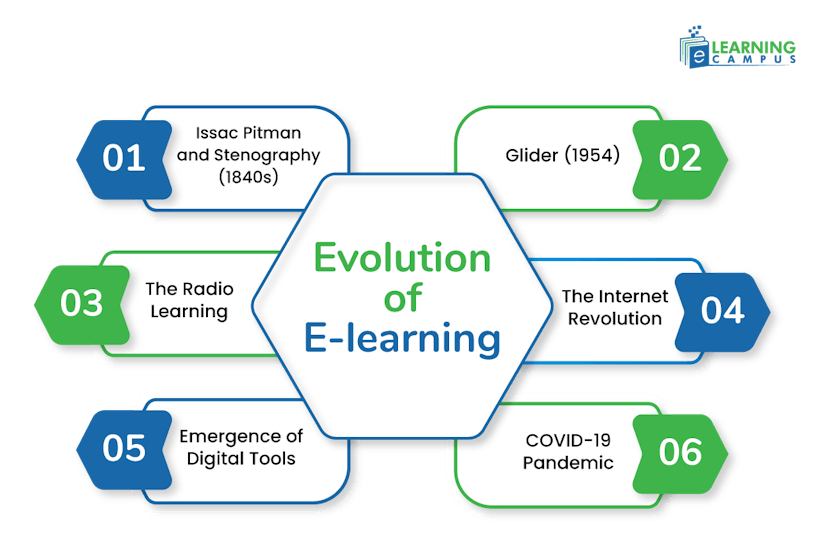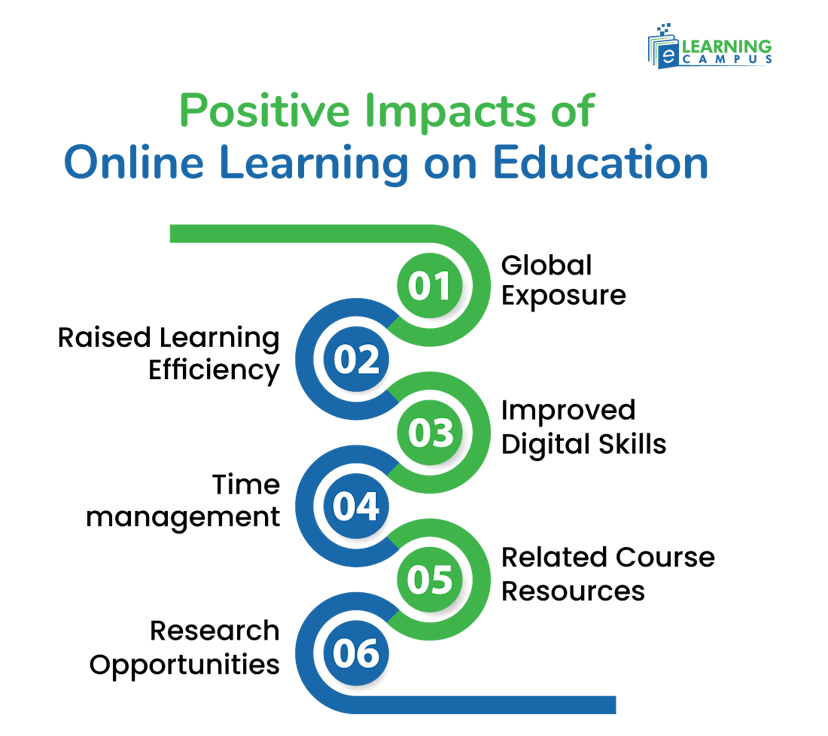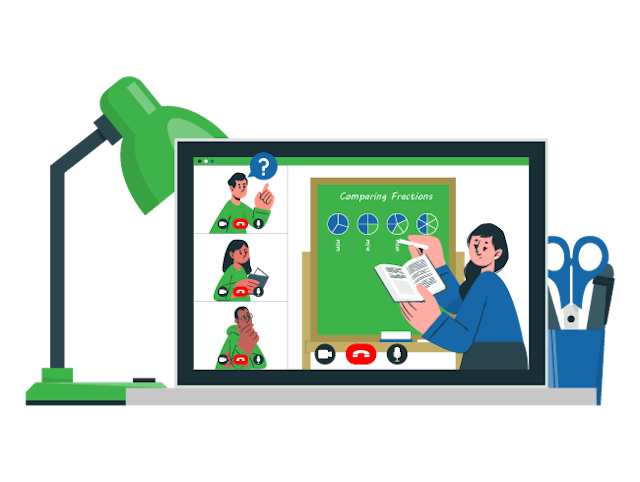How Online Learning is Transforming Modern Education

Online learning is transforming modern education by creating dynamic learning experiences, enhancing accessibility, and offering opportunities for global exposure. E-learning has emerged as a revolutionary factor in the academic landscape. This shift has changed students' approach to education, preferences, and learning goals.
In this blog, we will highlight the evolution of online learning, how it impacts the modern education system, and the challenges in virtual learning.
What is Online Learning
Online learning is getting education using digital technologies through the internet. It is also known as e-learning, virtual learning, or digital learning. It is delivered through various digital platforms, such as learning management systems (LMS) or websites.
In online education, students get their school, college, and university classes by sitting their homes. Some students do homeschooling and hire online tutors for them.
Evolution of E-learning
The learning used to be based on physical classes. Learners used to travel distances to attend the classes and get the respective education. Those who could not travel were deprived of education forever. As time passed, the concept of distance education was introduced. With the advancement of technology, the learning method has been transformed for good.
We will look into the timeline of the evolution of virtual learning.

Issac Pitman and Stenography (1840s)
Issac pitman is considered to be the person who gave the concept of distance learning. He was a teacher who used to teach stenography (shorthand) to his students. He used to send assignments to the students through the mail. The students get the assignments done and send them back to him. Journalists and other professionals later adopted this method.
Glider (1954)
Glider, a teaching machine, was devised by the Harvard professor BF Skinner. It would provide a programmed structure to the learners. The machine had a window that showed questions. Students who would attempt the questions correctly would go to the next level.
The Radio Learning
In the 1950s, radio was used as a means to provide people with education. Several radio programs were broadcast related to different subjects, such as economics, politics, and religion.
The Internet Revolution
With the rise of the internet in the 1990s, the revolution in digital learning started. It opened a new horizon for online learning and transformed the traditional educational system.
In this era, courses and assignments were submitted through email. The invention of LMS helped students get structured and manageable online educational content.
Emergence of Digital Tools
The twenty-first century gave rise to digital developments. Several digital gadgets, such as a laptop, a mobile, and a tablet, were introduced. These tools gave impetus to virtual learning. Students begin live learning with tutors globally.
COVID-19 Pandemic
The COVID-19 pandemic was a breakthrough in online learning. Although it affected every aspect of life, the educational domain was transformed for good. It compelled the educational institutes to deliver knowledge online. Through different tools and apps, students get their education from their homes.
Positive Impacts of Online Learning on Education
Online learning has transformed the way of getting an education. With online classes, courses, study materials, and a tutor, students can learn from anywhere. With flexibility and accessibility, it provides several learning opportunities for everyone. We will discuss the positive aspects of learning online.

Global Exposure
Online education facilitates quality education by exposure to global resources through online classes. It connects learners with diverse perspectives, resources, and opportunities beyond geographical limitations.
It enables students to connect with experts and researchers from around the world, expanding their network and facilitating knowledge exchange. A student from an undeveloped country can get Math lectures online from MIT’s professor.
Raised Learning Efficiency
Virtual learning has improved educational efficiency. With the use of technology and data analysis, online platforms make strategies that suit the learning pace and goals of students. The smart techniques and adoptable plans can improve the learning efficiency of students.
Improved Digital Skills
The traditional education was based on subject learning. There was barely a chance to focus on skills. Digital learning allows students to learn digital skills in different domains. People avail technical courses from globally recognized institutions.
Time management
Online learning requires a more disciplined and structured approach for time management. It helps students develop better time allocation, scheduling, and prioritization strategies to balance their studies, work, and personal life. Better time management can positively impact education.
Related Course Resources
The better side of learning online is that you can get reliable and well-researched content and resources about your course.
Research Opportunities
Digital learning provides a wealth of opportunities for research by offering access to diverse resources. It fosters global collaboration and facilitates data collection and analysis. Students can use online tools and databases. Researchers can connect with experts worldwide and engage in interactive research activities.
How eLearning Campus Transforms Education in Digital Era
eLearning Campus is a digital learning platform equipped with the necessities of modern education. We transform education in the modern era through a student-centric approach, highly qualified international tutors, the use of technology, and research based teaching approaches. Our approach for educational transformation includes;
- We help students find qualified and trained online tutors across the globe.
- Our platform focuses on digital education. Students learn based on critical thinking, hands-on experiments, and problem-solving techniques.
- We provide online education according to the needs of the modern educational system.
- Students get personalized instruction for exam preparations and show extraordinary results.
- We teach students based on the assigned curriculum of the respective country.
- We provide resources that help learners in their educational careers. It includes digital libraries, research work, textbooks, quizzes, and assessment reports.
Conclusion
Online learning has transformed modern education by enhancing accessibility, personalization, interactivity, and global collaboration. It offers cost cost-effective opportunity for students to learn from any corner of the world. eLearning Campus plays a vital role in assimilating knowledge through digital platforms.
Learn Online With Us
Are you looking for a viable platform to learn from home? You are at the right place. We help students learn online globally. We have expert online tutors for every subject. You will get personalized instructions according to your needs.
